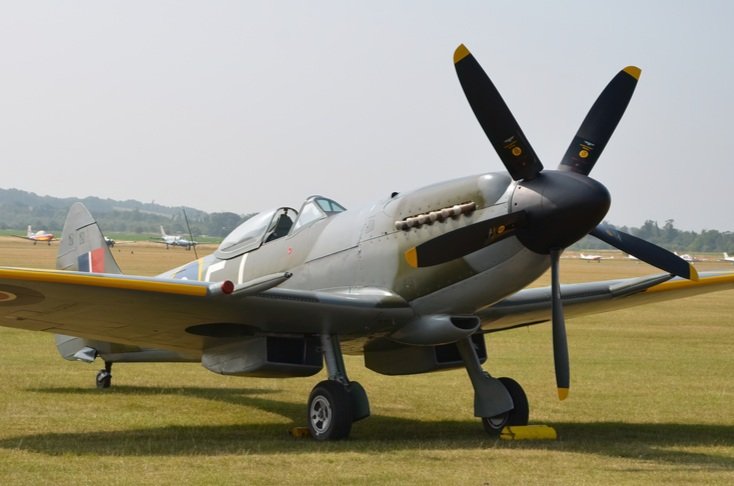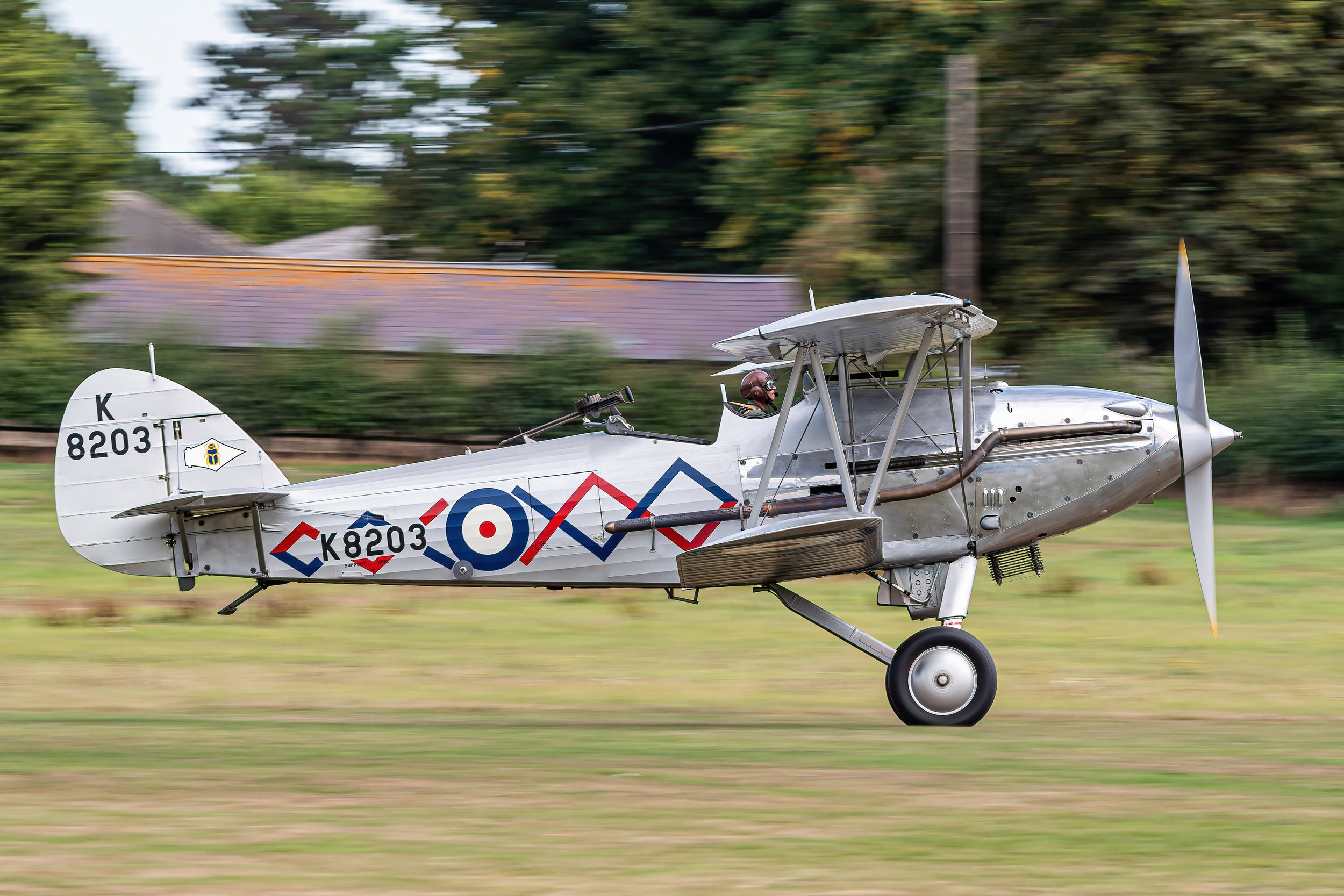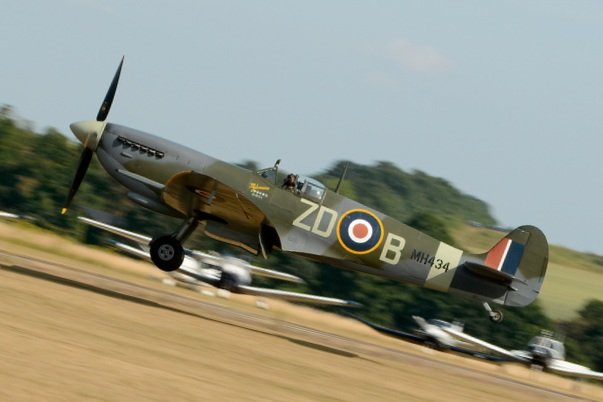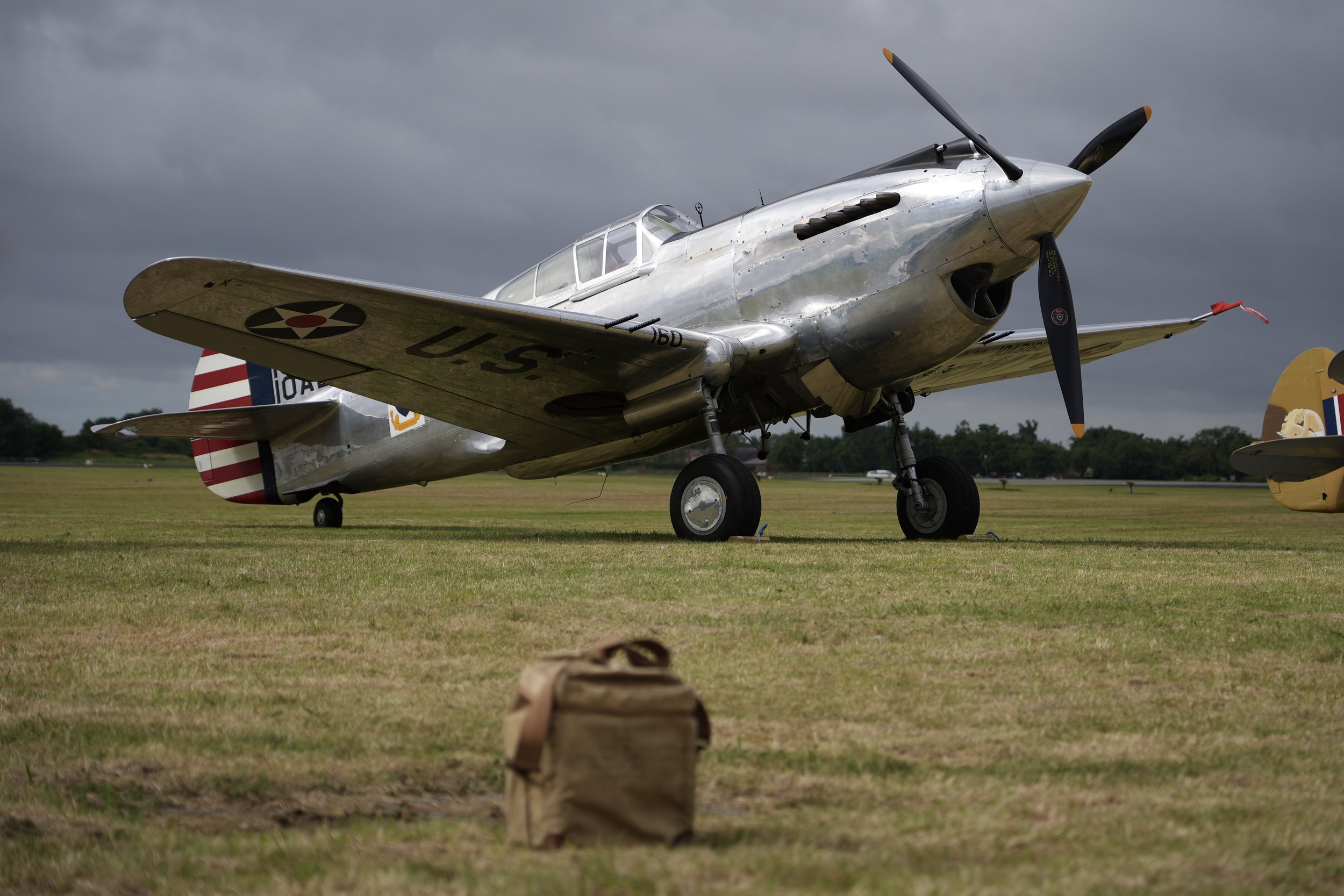Spitfire G-PBIX
Year built
1945
Aircraft
Spitfire LF.XVIe
Base
Duxford Airfield
Spitfire RW382 was manufactured as a ‘low-back’ Mk.XVI by the Castle Bromwich Aeroplane Factory, located near Birmingham, UK. The Mk.XVI is essentially identical to a Mk.IX Spitfire, but powered by an American-built Packard Merlin 266, rather than a Rolls-Royce Merlin 66 as fitted to the Mk.IX. Manufactured too late to see action in WWII she was delivered to No 6 Maintenance Unit at Brize Norton on July 20th, 1945.
In April 1947, she was assigned to No 604 RAF Auxiliary Squadron at Hendon and served until April 1950 when she was retired to No 33 MU at Lyneham.
Later that year, she joined the No 3 Civilian Anti-Aircraft Cooperation Unit at Exeter and following that assignment she was transferred to the Control and Reporting School at Middle Wallop on the 17th of October 1950.
RW382 was once again retired from duties in July 1953, and flown to No 45 MU at Kinloss and then to No 29 MU at High Ercall. She was finally struck off charge on December 14, 1954 ending her RAF flying career.
With her active flying days in the RAF over and following a year in store, RW382 was allocated to No.609 squadron at Church Fenton as instructional airframe 7245M (although she was painted as M7245 at some time).
On 28th November 1955 she was transferred to gate guardian duties at Leconfield as RW729.
In 1968, she was taken down off her display pole for use in the movie “Battle of Britain”, where she was used for static scenes having been disguised as an earlier high back model. Following the end of filming, she was once again put atop a pole at RAF Uxbridge.
Shortly afterwards, on 19th May 1970, she was taken to No.5 MU Kemble for refurbishment, returning to Leconfield on 6th July in a dubious green/dark earth camouflage scheme complete with 1940-style roundels. This scheme she retained when taken by road on 4th April 1973 to Uxbridge where she was once again mounted on a display pole adjacent to the main gate where she remained until 1988.
It was that year that Tim Routsis of Historic Flying Ltd acquired RW382 and sold the project aircraft to American David Tallichet in 1989.
Following a two-year restoration with Historic Flying Ltd at Audley End, she made her first post-restoration test flight on July 3, 1991, registered as G-XVIA.
The aircraft remained in the UK and was sold to Bernie Jackson of Manitoba, Canada in 1994. In 1995, she was shipped to the US and registered on the US civil register as N382RW.
In June 1998, the aircraft was involved in a fatal crash in Blue Canyon, California.
The Spitfire was being flown from Chico, California (after taking part in the Carson Valley Airshow) back to its base at Minden-Tahoe, Nevada by 37-year-old ex.RCAF pilot Thomas Jackson, nephew of owner Bernie Jackson.
The pilot obtained a preflight weather briefing for a VFR flight across the mountains and stated he would be 30 minutes en route at 1500 feet above ground level. According to witnesses parts of the mountainous terrain were obscured in clouds and fog.
The aeroplane hit the wall of the Blue River Canyon when, according to a spokesman from the Nevada Sheriff’s Department, the pilot apparently attempted to turn back up the valley. The Civil Air Patrol picked up a signal from an emergency distress beacon on June 4th and a Californian Highway Patrol helicopter located the wreck of the aircraft later that same afternoon.
The wreckage was shipped back to the UK and registered as G-PBIX to Pemberton-Billing LLP.
Sent to Biggin Hill for restoration by Peter Monk’s Spitfire Company Ltd in 2011.
As part of this most recent restoration project, RW382 was converted from a low-back Mk XVIe to a high-back Mk IX configuration complete with Rolls Royce Merlin, full wing tips and earlier rounded tail.
The first post-restoration test flight was performed by Clive Denney (who had carried out the original restoration at Audley End before the aircraft was sold to the US) on September 18, 2013. The aircraft was painted in RAF No 322 (Dutch) Squadron markings, coded ‘3W-P’.
In September 2020 RW382, by now owned personally by Peter Monk, was repainted in the markings of the Mk.IXc‘Porky II’, which was assigned to the USAAF 309th Fighter Squadron, 31st Fighter Group, stationed in the Mediterranean Theatre in 1943 and flown by Lt. Robert Connor.
In honour of the American ties to East Anglia during World War2 RW382 is painted in the USAAF colour scheme of the Mk.IXc was flown by Lt. Robert Connor of the 309th Fighter Squadron in the Mediterranean Theatre of Operations in 1944.
She carries nose art depicting the cartoon character Porky Pig as a reference to Lt Connor’s squadron nickname of Porky. The 309th FS converted from P-39s to Spitfire Vs on arrival in Britain in 1942 and flew these in North Africa, Sicily and Italy. In April 1943 the squadron received their first Spitfire Mk IXs and these were often used to provide top cover for Spitfire Mk Vs. In March 1944 the 309th swapped their Spitfires for longer-ranged P51 Mustangs to allow them to escort USAAF bombers over southern Germany.
| Back to Top |
Supermarine Spitfire LF.XVIe
The Supermarine Spitfire is a British single-seat fighter aircraft that was used by the Royal Air Force and other Allied countries before, during, and after World War II. Many variants of the Spitfire were built, using several wing configurations, and it was produced in greater numbers than any other British aircraft. It was also the only British fighter produced continuously throughout the war. The Spitfire continues to be popular among enthusiasts; nearly 60 remain airworthy, and many more are static exhibits in aviation museums throughout the world.
The Spitfire was designed as a short-range, high-performance interceptor aircraft by R. J. Mitchell, chief designer at Supermarine Aviation Works, which operated as a subsidiary of Vickers-Armstrong from 1928. Mitchell pushed the Spitfire's distinctive elliptical wing with cutting-edge sunken rivets (designed by Beverley Shenstone) to have the thinnest possible cross-section, helping give the aircraft a higher top speed than several contemporary fighters, including the Hawker Hurricane. Mitchell continued to refine the design until his death in 1937, whereupon his colleague Joseph Smith took over as chief designer, overseeing the Spitfire's development throughout its multitude of variants.
During the Battle of Britain, from July to October 1940, the public perceived the Spitfire to be the main RAF fighter, though the more numerous Hurricane shouldered a greater proportion of the burden against Nazi Germany's air force, the Luftwaffe. However, Spitfire units had a lower attrition rate and a higher victory-to-loss ratio than those flying Hurricanes because of Spitfire's higher performance. During the battle, Spitfires were generally tasked with engaging Luftwaffe fighters—mainly Messerschmitt Bf 109E-series aircraft, which were a close match for them.
After the Battle of Britain, the Spitfire superseded the Hurricane to become the backbone of RAF Fighter Command, and saw action in the European, Mediterranean, Pacific, and South-East Asian theatres. Much loved by its pilots, the Spitfire served in several roles, including interceptor, photo-reconnaissance, fighter-bomber, and trainer, and it continued to serve in these roles until the 1950s. The Seafire was a carrier-based adaptation of the Spitfire that served in the Fleet Air Arm from 1942 through to the mid-1950s. Although the original airframe was designed to be powered by a Rolls-Royce Merlin engine producing 1,030 hp (768 kW), it was strong enough and adaptable enough to use increasingly powerful Merlins and, in later marks, Rolls-Royce Griffon engines producing up to 2,340 hp (1,745 kW). As a result, the Spitfire's performance and capabilities improved over the course of its service life.
The Spitfire MkV was one of the most successful ‘stop-gaps’ ever introduced into Royal Air Force Service. Over one hundred and forty RAF squadrons operated the type. It served on all battlefronts and was supplied to nine other countries including the Soviet Union and the United States.
During 1940 the Spitfire MkI and MkII barely maintained superiority over the Messerschmitt Bf109E so the Air Staff turned their attention to the question of a replacement. Their preferred successor was the MkIII, fitted with a Merlin XX engine and incorporating a new wing design.
Realising it would take time to tool up for a new production aircraft and because of problems with the Merlin XX, the Air Ministry asked Rolls-Royce, as an interim measure, to install the Merlin 45 engine in the Spitfire MkI airframe. Between 1941 and 1943 over 6500 of this MkV version were produced. The spitfire MkIII never did go into production but some of the new design features intended for it were incorporated into the MkV
By 1944 only five squadrons remained in service. Even so, two Spitfire MkV squadrons provided gunfire direction on 6 June 1944 for naval units off the D-Day beached of Normandy.
| Back to Top |
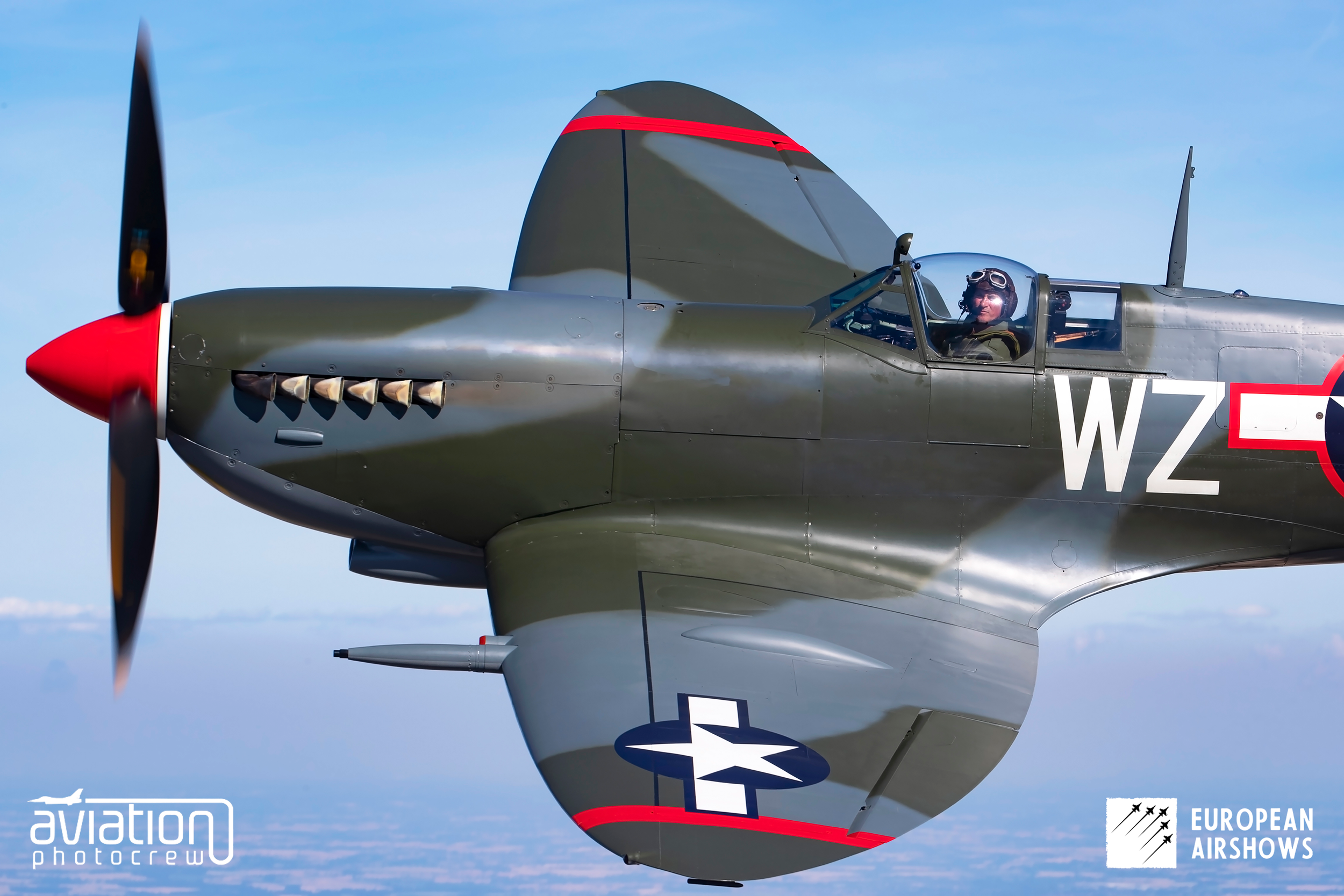
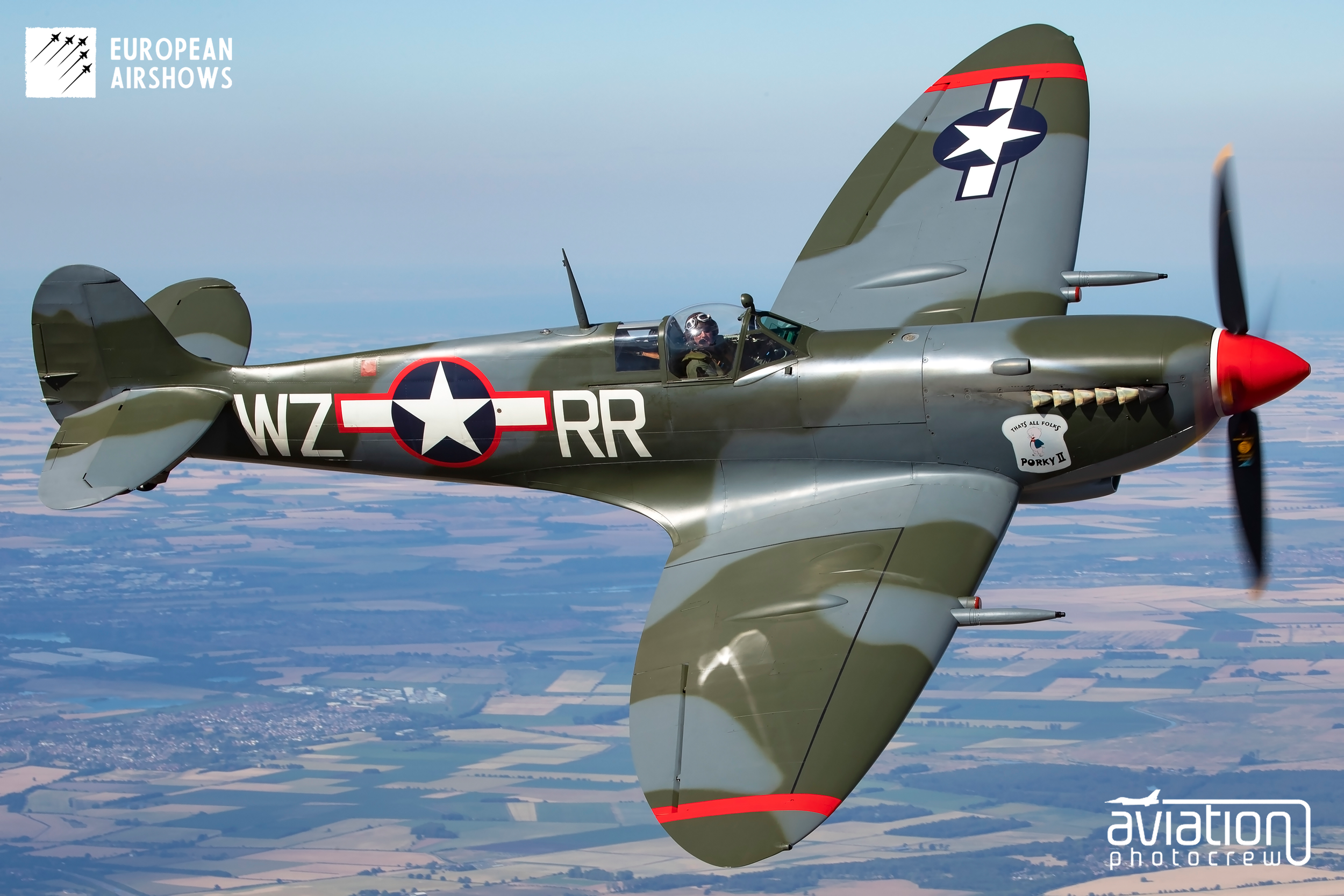

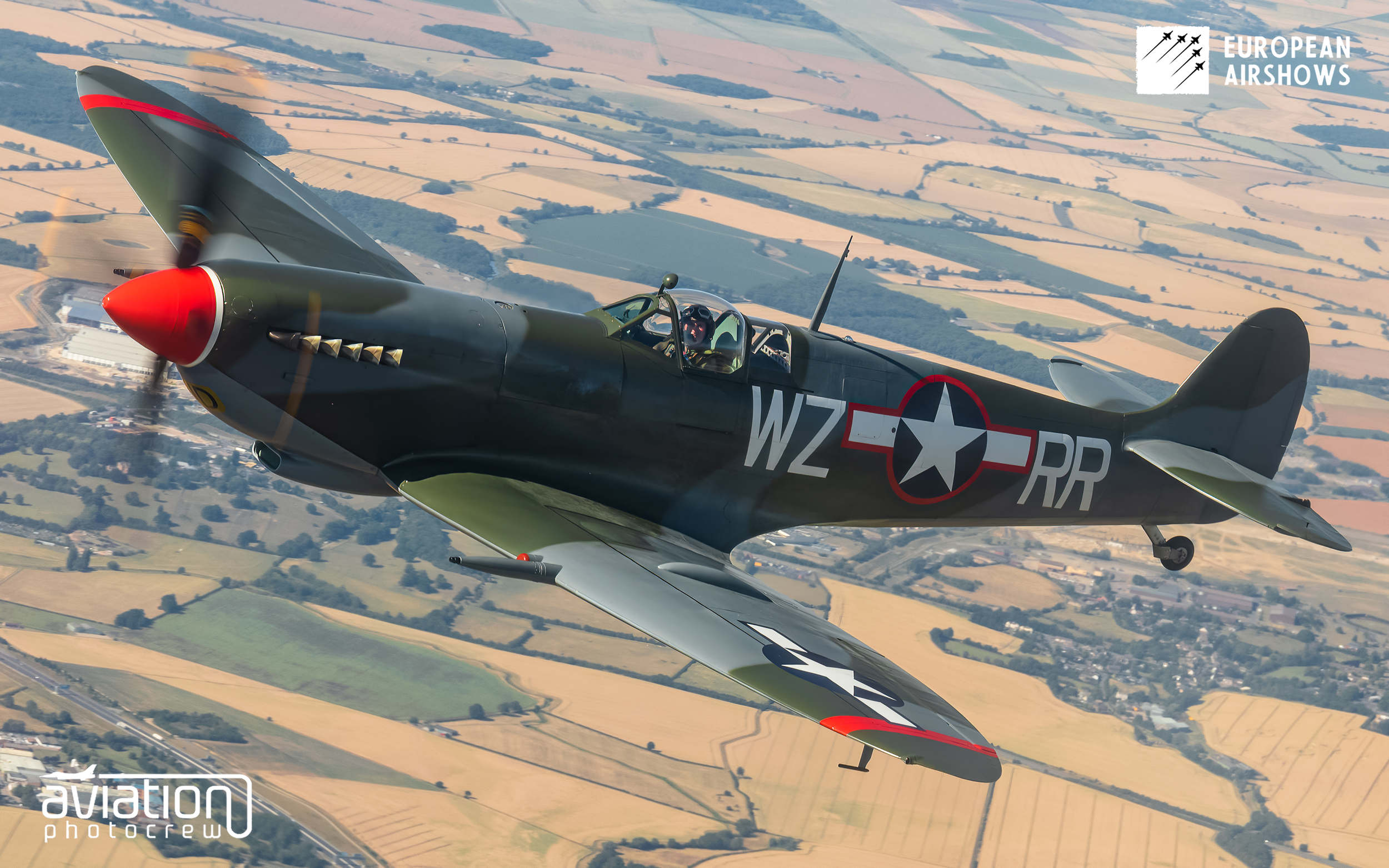
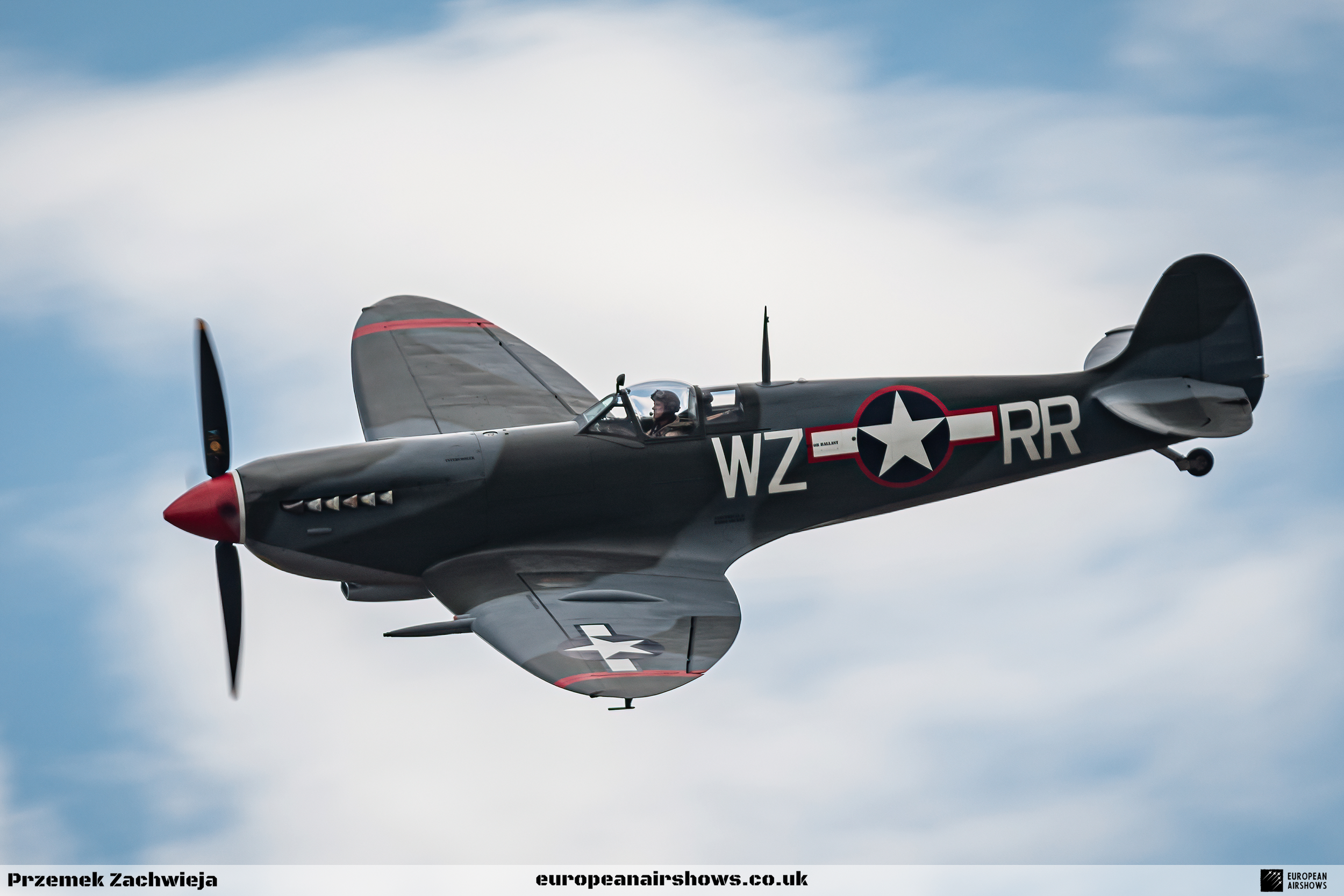
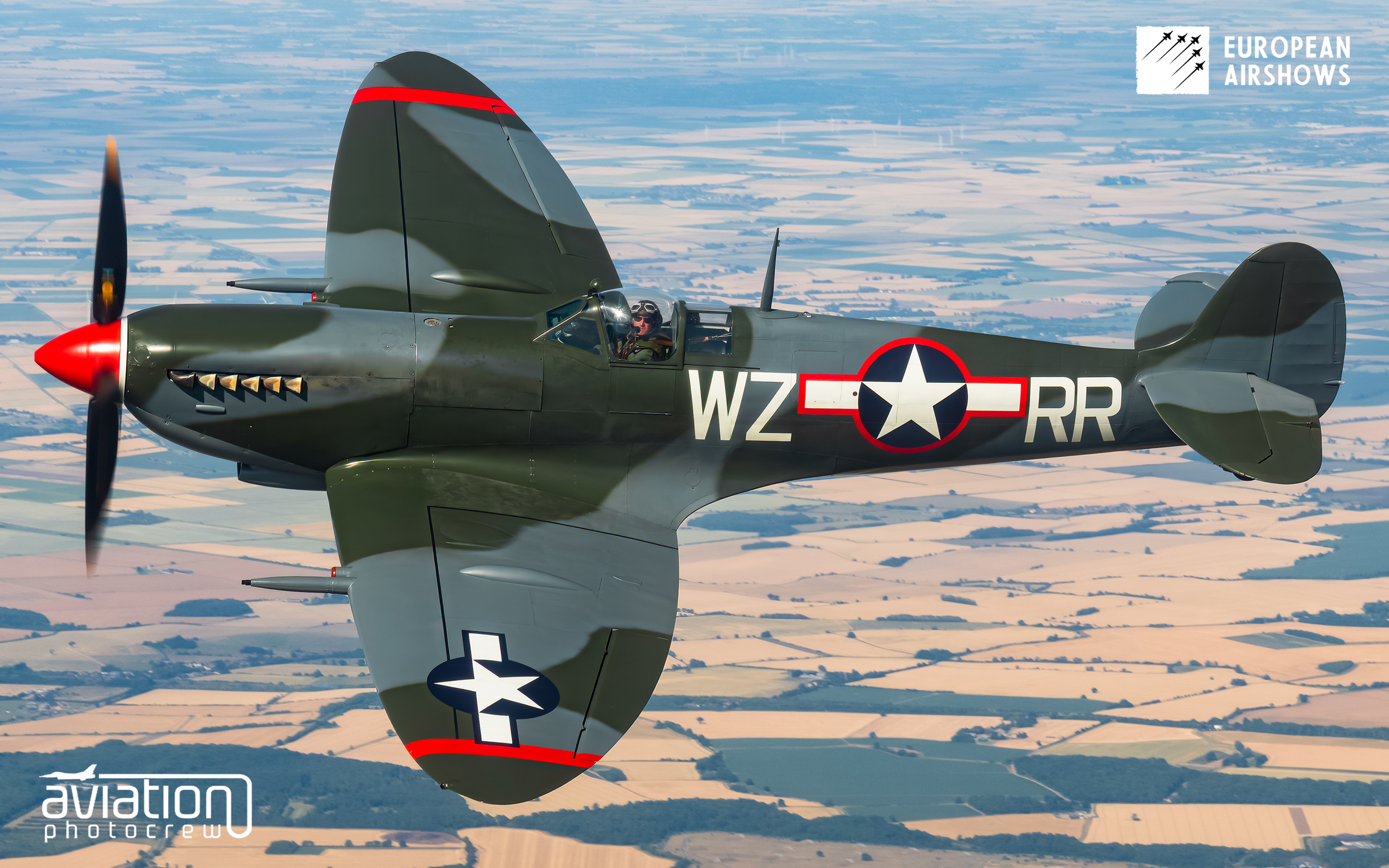
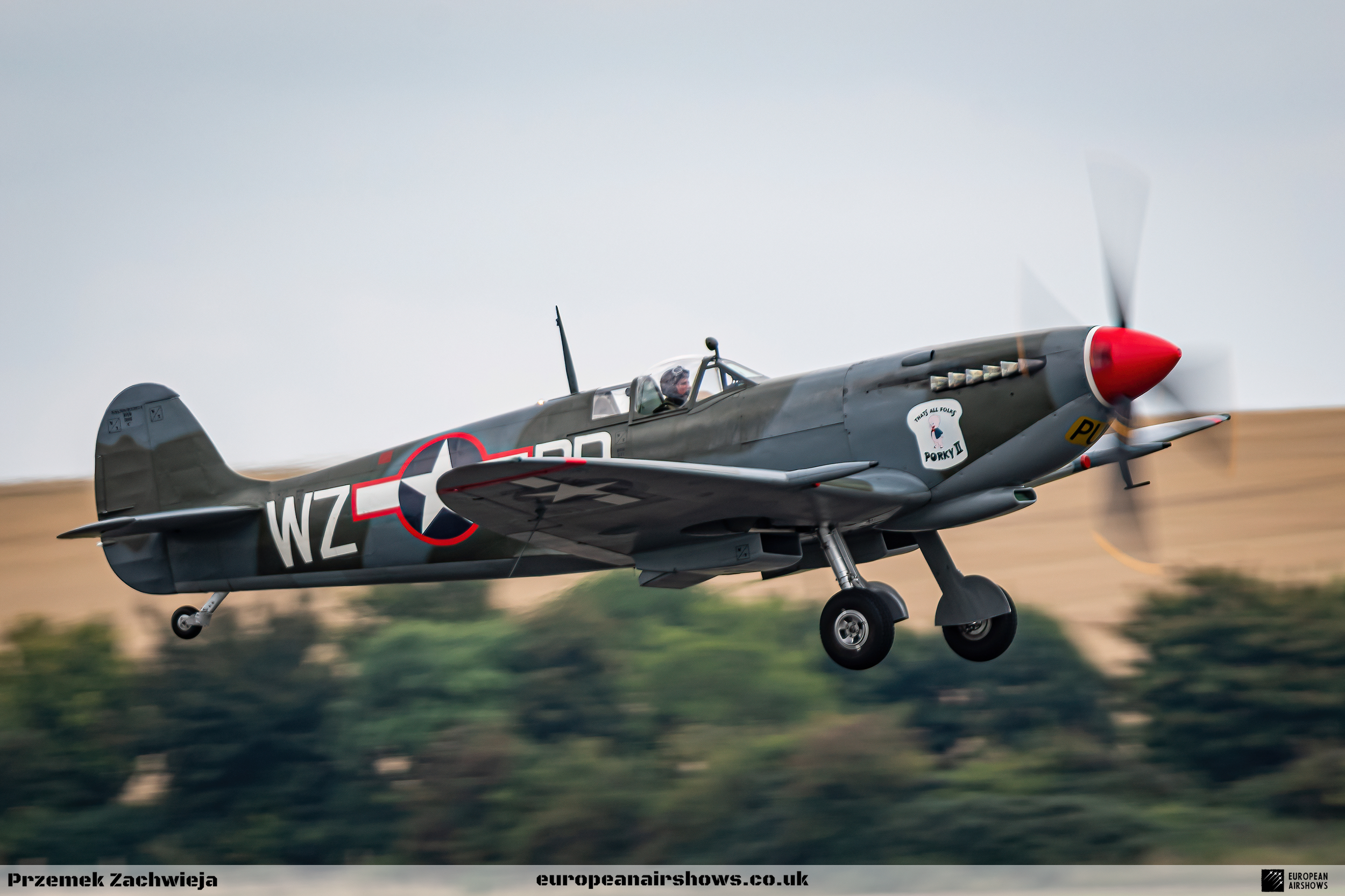

| Back to Top |






















